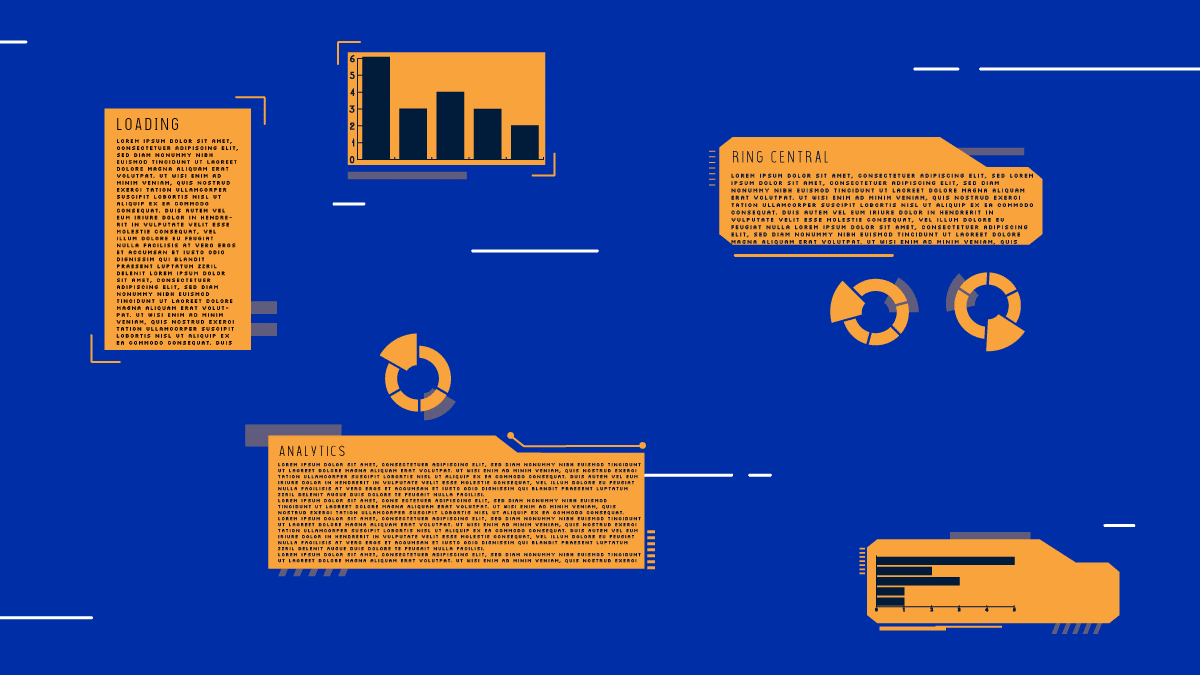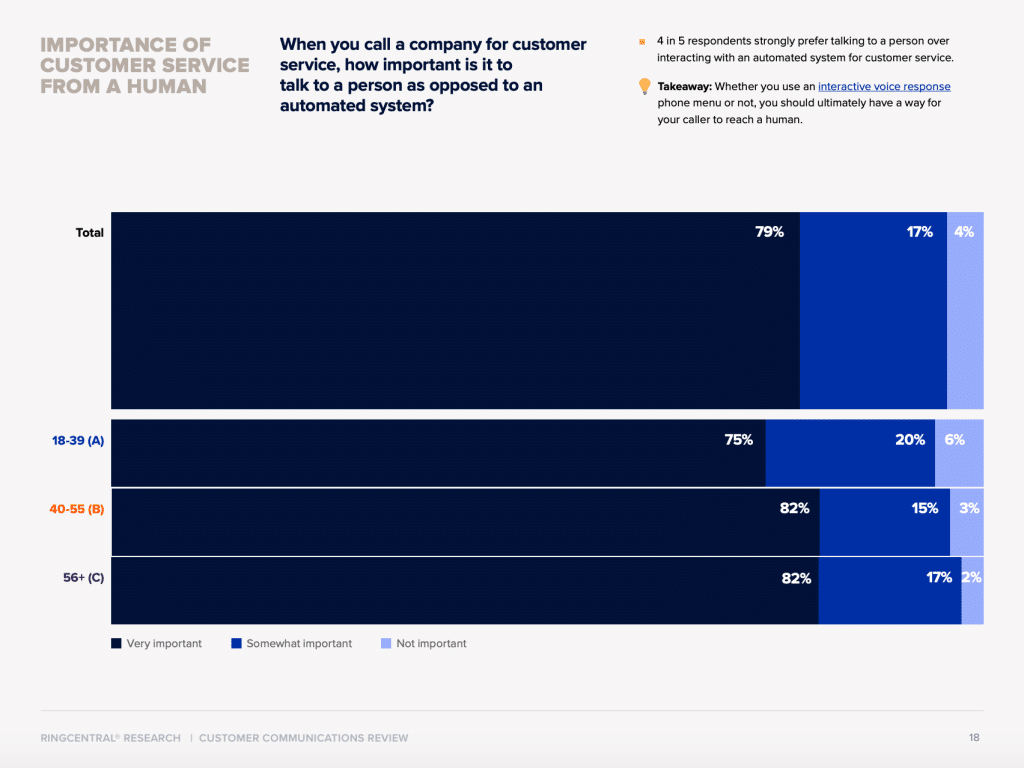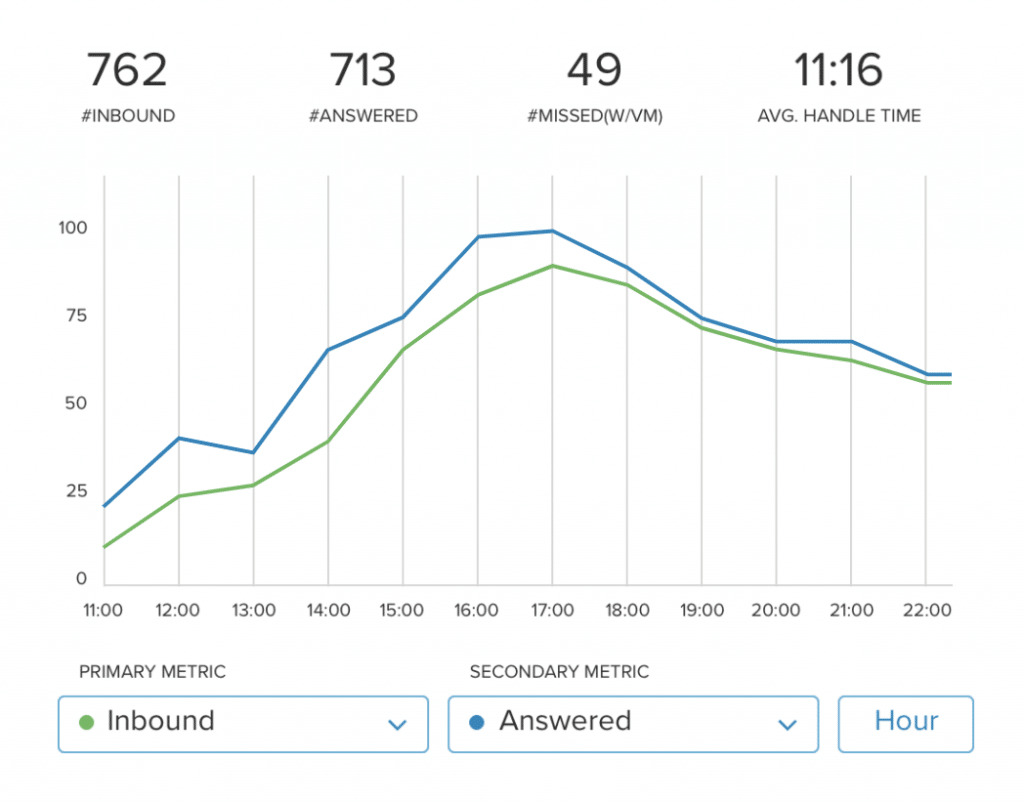Running a business is like running a triathlon for a living.
You have to put in a lot of planning, preparation, and hard work just to keep going.
And if you’re really serious about it—if you want to outdo your competition—you will most likely have a personal trainer or advisor to consult with.
Every now and then, your advisor will measure your biomarkers, recommend an effective workout regimen based on the readings, and tell you to make lifestyle adjustments to help you achieve maximum speed and performance.
And if you’re trying to improve your customer experience, that trainer or advisor is your analytics report.
Data cuts across all stages of a customer journey.
Data tells you what your customers want, how they perceive your product, how they engage with your brand, and how they feel after doing business with you.
And that’s where customer experience analytics comes into play.
Analyzing data is super important not just to understand customers’ motivations behind a purchase, but also for your brand to make the right moves to meet customer expectations.
The really smart researchers from the Forrester group also back up the importance of customer experience analytics in one of their recent industry reports.1
The paper mentions a new (and arguably ground-breaking) concept of Next Best Experience, or NBX, which they define as:
“The ability to identify and deliver the right experience to the right customer in real-time based on everything you know about the customer.”
In other words… using analytics to improve your customer experience (CX)!
The folks at Forrester suggest that the future belongs to businesses that can analyze signals across the entire customer journey to create a holistic customer experience—instead of the traditional way of piecing together different parts of the experiences.
In this post, we’ll look at:
- What “customer experience analytics” means
- The benefits of having (and using) customer experience analytics
- How you can improve your customer experience using analytics
- What metrics you can use to measure customer experience
🔍 Access Metrigy’s free report to learn more about the 2022 state of customer experience technology.
What does “customer experience analytics” mean?
Most phrases with the word “analytics” tend to scare people off.
Luckily, customer experience is not one of those super-hard-to-grasp concepts. It literally is what it says: customer + experience + analytics.
“Customer experience analytics” basically refers to the data that illuminates your customers’ relationship with your business. From how they become aware of your brand, to the buying experience, to expansion and upselling, this is a term that takes a holistic view of the customer experience.
To collect this data, there’s usually a process that covers everything from discovering and understanding customer data, to analyzing it so that your brand can make informed decisions to improve the customer experience.
What are the benefits of having (and using) customer experience analytics?
Data is the internal compass of any business. It helps you to sail your business in the right direction and provides a solid foundation for you to grow and retain your customer base.
And data can be an especially huge lever for small businesses that are just starting out.
The earlier you can cash in on data and analytics to feel your customers’ pulse from early on, the more nimble you can be about your strategies and ultimately set yourself up for success.
And data is a dynamic commodity. You can use it either to give more individualized attention to your customers or to delight your customers at scale.
Here’s an example that many small businesses can probably relate to.
Let’s say you’ve set up an automated interactive voice response (IVR) to make your customer service more efficient. It’s a great solution to your recurring staffing problems, plus it empowers your customers to help themselves by hitting the right numbers on their phone.
Nothing wrong with that, right?
Well, it turns out—data tells a different story.
While workflow automation does make most teams more efficient, customers who call with service-related questions prefer to talk to a human as opposed to interacting with an automated IVR.
Take a look at our recent survey into how consumers like to communicate with businesses:
Without data and analytics, many people might assume that having a chatbot would be enough, or might over-automate their customer service without considering what customers actually want.
And that’s just one example. Using a powerful tool that tracks your call center metrics can give you critical insights about, say, if your team is using your phone system efficiently and how you might be able to provide more agile customer service.
From gathering important customer intelligence, to rewiring your customer engagement strategies and creating a game plan for more complex customer interactions, there are so many things you can do with customer experience analytics.
And that leads us to the big question we sought out to answer in this post.
[ebook-download title=”How customer-obsessed is your business?” link=”https://netstorage.ringcentral.com/documents/quiz_how_customer_obsessed_your_business.pdf” cta-text=”Take the quiz” src=””]
How can you improve your customer experience using analytics?
The traditional way of managing customer experience can be pretty siloed—Marketing has one idea of what customers want to hear, while Sales and Customer Support teams might have their own strategies.
This has to change. If you want to provide a consistent customer experience, you have to be able to use data to align all the teams toward the same goal.
Below, we’ll look at four ways to improve your customer experience by using data and analytics.
1. Unify the customer journey
To use data to your advantage, you have to first have data.
Right now, here’s how it’s happening in many companies:
Marketing teams invest a lot of their time and energy to come up with things like ideal customer profiles (ICPs) and customer journey map templates.
As customers move along their journey, brands typically look at bounce rates on their website pages, subscription rates, and email open rates to measure the level of engagement.
And once they turn into paying customers, brands run surveys like customer satisfaction (CSAT), Net Promoter Score (NPS), and Customer Effort Score (CES) to measure how they’re performing in the eyes of their customers.
And this is all great—if you can tie all the data together in a single harmonious thread.
Here’s one way you can do that: use the voice of the customer (VOC) to capture customer intel.
A form of detailed research that brands can conduct to understand their customers’ requirements and expectations—across all stages of their journey.
Let’s talk about how Subbly, a software as a service (SaaS) company, uses VOC to improve their product.2
Subbly is an ecommerce subscription platform based in Los Angeles with a small team (less than 10 people).
But don’t let their small size fool you—it doesn’t stop them from gathering valuable customer feedback.
The beauty of how Subbly does it is that a lot of this work is automated. For example, they have a dedicated page on their website where customers can submit feedback on their product.
At one point, they also had a short survey embedded on their pricing page to understand whether prospects are willing to pay a higher monthly subscription fee and a lower transaction fee, or vice versa:
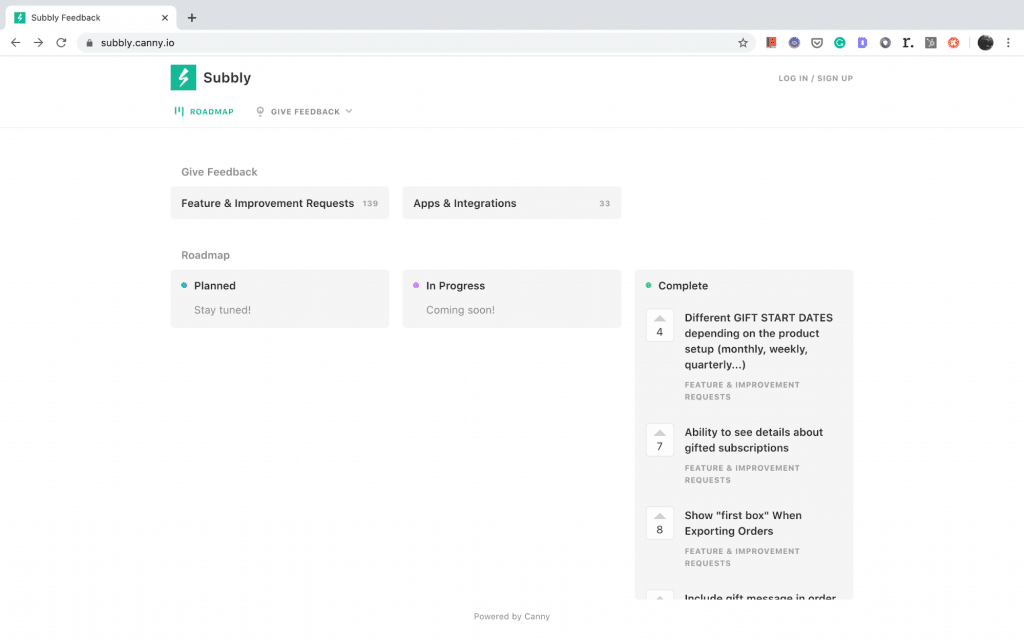
Here’s what Subbly CEO Stefan Pretty has to say about doing this exercise.
“We allow customers to voice their suggestions and vote on each other’s on our feedback page link. And we also use our Facebook group to get feedback.”
Pretty says that the company launched two major features—an improved checkout page and a tax calculation feature—directly as an outcome of gathering customer feedback.
Unlike the job of mapping a customer journey or building a user persona, collecting the voice of the customer isn’t just one department’s job. First, It’s the responsibility of your leadership team to enforce every team’s participation to use customer experience analytics to draft the VOC.
Now, this VOC allows each function in your business to set the right benchmarks for themselves.
Your product team will be able to come up with new features that your customers are asking for—or scrap the ones that are making your product feel bloated.
Your marketing and sales team can set realistic leads and budget goals for the next quarter based on the VOC.
And your customer support team can work towards improving metrics like their first call resolution rate (if that’s what customers are complaining about).
If, in case, your teams fail to reach the benchmarks—it either means there’s a gap in their performance or they set unrealistic metrics for themselves.
If they crush their goals too easily and/or overachieve their metrics, that means they either set the benchmarks too low or that they now have to raise the bar.
Use VOC to avoid being obsessed over isolated metrics—such as website traffic or call handling time—because they don’t represent the big picture.
2. Personalize your customer experience
Data is powerful when used right, but it can come across cold and impersonal if you don’t use it in a contextual way.
For example, you should be matching your customers’ intent with the right data to create a holistic customer experience.
Say you run a boutique hotel franchise in a cute town near a popular ski resort.
Come every November, you get the same customers at your reception desk once the ski season kicks off.
And every year, when your customers check in to your hotel, they bring a ton of valuable data that you can analyze to offer a better customer service.
If you use this data just to fulfill basic service interactions like matching the guest ID with your last year’s records or auto-filling their phone number during the check-in form… that’s not what we’re talking about. That’s just doing the bare minimum with your data.
You could be doing more—by using this customer data to offer a personalized experience and giving your customers an incentive to stick with your business.
One way to kick it up a notch with simple personalizations? Offer long-time or returning customers a complimentary bottle of their favorite wine. (You might’ve seen examples of hotels doing this on Instagram and Twitter.)
According to Deloitte’s guest experience survey, people are 13% more likely to stay with the hotels that they feel understand them.3
Imagine the brand stickiness this can lead to. The next time your customer travels to Chicago and spots your boutique hotel chain, they’ll most probably check in to get that extra personal touch.
(Oh, and we used an example from the hospitality industry because hotel chains offer some of the world’s best customer experiences by using data as a leverage.4)
You might already be applying personalization to your marketing and sales campaigns. Why not do the same in your customer service?
For instance, using RingCentral Contact Center’s CRM integrations and real-time analytics and customizable reports, you can empower your team to not only handle customer issues faster, but also personalize your interactions to:
From looking at specific insights like up-to-the-minute information about a customer who’s calling, to generating a visual, customizable report data to assess your call center’s overall performance over a specified period of time, the right tool can really help you amp up your customer experience.
3. Use big data to your advantage
Big data sounds like a big ask for small businesses. But it’s really not—especially when you think of the benefits.
Big data analytics basically refers to the “extremely large data sets that can be analyzed to reveal patterns, trends, and various insights.”5
In a customer experience context, using big data allows you to tap into the vast data about your customers’ behaviors to improve their experience.
For instance, you might already be connected to your customers through various social media channels.
And if you have a proactive customer service approach, you may be using tools like Kurrently and Mention to track your brand’s mentions in social media and manage your brand reputation.
Now, if you can connect your contact center software with one of these monitoring tools, you can respond to urgent customer questions and engage with prospects to offer real-time, omnichannel customer service:
Amazon and Nike are two big brands that are leading the way in using big data to offer outstanding customer experiences.
If you have ever shopped online with Amazon, you might remember how effective their recommendation is.
And the recommendations get better every time you shop with Amazon—the more Amazon’s algorithm knows you, the better it can predict what you might be interested in buying.
For instance, when you add Clorox toilet wand to your online shopping cart, Amazon recommends you similar other cleaning products, like a disinfecting bleach solution or a box of disposable plastic gloves.
Amazon does this based on what other customers with strikingly-similar buying behavior like yours purchased in the past:
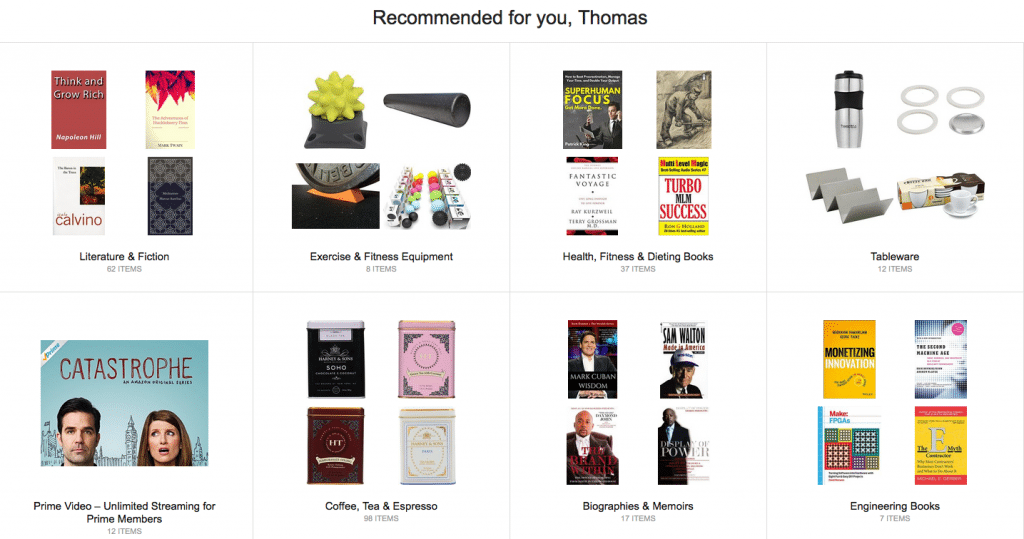
Amazon generates 35% of the company’s annual sales purely from this use of predictive analysis in recommending similar items.6
This is all because Amazon knows how to work with data science—a term that includes everything related to big data, artificial intelligence, machine learning, and deep learning.
Nike also uses predictive analysis to help Nike Plus members create their own Nike-branded merchandise, an online service it calls Nike By You.7
And although customers need to pay a premium to access the service, members spend three times more when they buy from Nike.com compared to regular Nike buyers.8
This is Nike’s way of staying ahead of its customer expectations and offering their personalized services at scale.
What do these two examples tell us?
First, big data can help you take the customer experience to the next level. And that customers don’t mind paying more for a customized experience.
And big data isn’t something that only global brands like Amazon or Nike can use. It’s becoming increasingly popular for small businesses to cash on the yields of big data.9
Big data is all about connectivity. For example, you can use an affordable Internet of things (IoT) solution to enable your devices to talk to each other, control them remotely, and improve team productivity.
Here’s a common scenario that most small retail businesses can relate to.
You can use IoT to ensure you have enough inventory in stock to meet customers’ demands and offer their delightful shopping experiences tailored to their needs.
Several small brands are using voice assistants like Siri or Alexa or chatbots to improve their customer service efficiency.
They connect these technologies with other business tools such as customer relationship management (CRM) or help desk software to offer faster, more meaningful customer interactions while improving their agents’ productivity.
Remember the concept of Next Best Experience (NBX) we discussed towards the beginning of this article. Well, NBX is nothing but using the right mix of data at the right time (mostly, in real time) to offer a remarkable customer experience.
4. Hold one team accountable
But hold on! I thought you said that every team is responsible for the customer experience!
Yes, but hear us out.
Customer experience has many different dimensions to it within the same business.
The marketing and sales team look at it differently vs people from other functions such as IT or even HR, who think about CX from an employee engagement viewpoint.
There’s no doubt that all these functions are intrinsically tied to each other and they come together to form a wonderful collage of customer experience. And that is still true—everyone should be responsible for the customer experience.
But while it’s great to have all hands on decks when it comes to creating a uniform customer experience, we’d suggest that you hold one function accountable for it.
And we’re not talking about just your marketing or customer service team—we recommend you set up a team that spans in its scope all the way from brand awareness to customer retention.
Why? Because typically, each function—product, marketing, and customer service—views the customer experience through its own lens, which risks you missing out on the bigger picture. Each one also uses different metrics to measure their team’s success.
And that’s a gaping hole in your CX strategy.
So the best thing you can do to create a world-class customer experience—if you have the resources—is to have a Customer Experience Officer (CXO). Or, have someone from your leadership team double as a CX authority who can bridge the gap across the different teams.
The role of a CXO is to align all functions within your brand—from engineering to marketing to customer service—under the same mission of delivering a happy customer experience.
A CXO should be in charge of owning the CX data, creating an analytical harmony in your business and putting the data to good use.
The CXO should champion not just the customers’ expectations but also your employees’ role in your brand’s growth.
After all, you need a single point of contact to own and run the VOC and share the insights with all business teams to make the most of it.
3 metrics to measure customer experience
This circles back to what we discussed earlier in the post—different teams view and measure CX in a way that’s convenient for them.
For example, marketing thinks an increase in the number of customers onboarding is a good indicator of an excellent customer experience.
Sales might look at the lead-to-customer conversion ratio or average days to close as the most important metrics.
And the customer service team may measure the success of good CX based on metrics like average time in queue or first call resolution.
While there’s nothing technically wrong with these teams measuring these metrics, none of them represent CX in its entirety, i.e., from the time a customer starts engaging with your brand (also known as customer’s moment of truth) until the time they end their relationship with your business.
That doesn’t mean you can’t measure CX—you just need to identify the right metrics.
1. Customer lifetime value
Customer lifetime value is also known as CLV or CLTV. It calculates the estimated total dollar value that a customer will spend with you for as long as they buy from your brand.
CLV is one of the most important metrics to measure CX because it captures other important CX metrics like brand loyalty and customer retention.
Here’s the formula to calculate CLV:
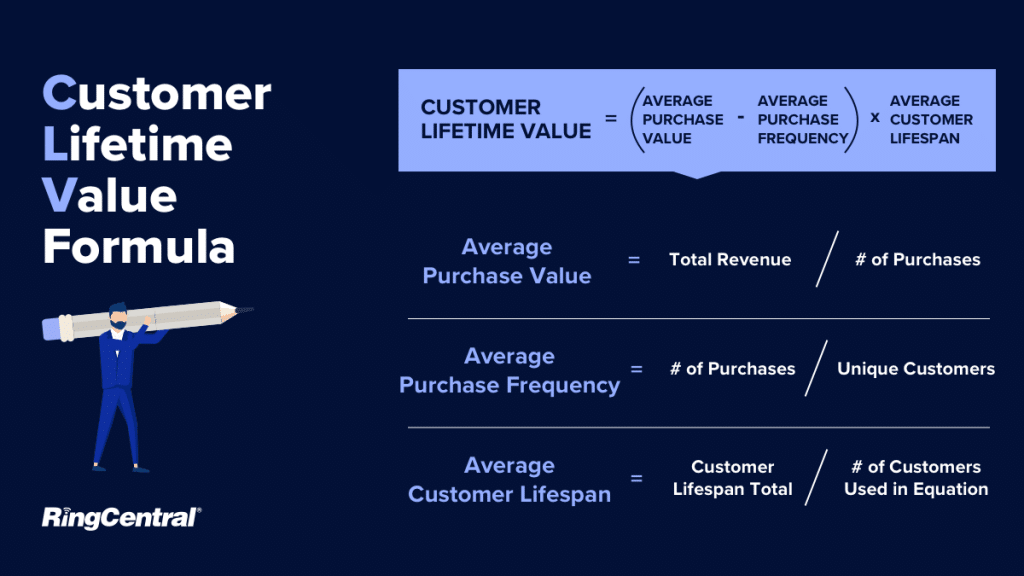
Good CX leads to improved CLV, and the best way to improve CLV is by constantly delighting your customers at every opportunity.
You can also apply tactical ideas like offering incentive-based loyalty programs to customers or giving them discounts on a yearly subscription plan to increase CLV. But these ideas won’t get you too far unless you offer a rewarding CX too.
2. Customer happiness
Unlike popular belief, measuring customer happiness isn’t limited to customer service teams.
Metrics such as CSAT, NPS, and CES are also good brand metrics to measure customer experience consistently across the board.
Here’s what each of them mean:
CSAT
CSAT is a way to measure customer satisfaction, typically on a scale of 1–10, where 1 signifies the customers are “very dissatisfied” and 10 means they are “very satisfied.”
NPS
NPS, or Net Promoter Score, is a single-metric survey used widely in customer experience programs. Its goal is to identify customers who are a) very vocal advocates of your brand (promoters), b) neutral customers, and c) customers who don’t think highly of you.
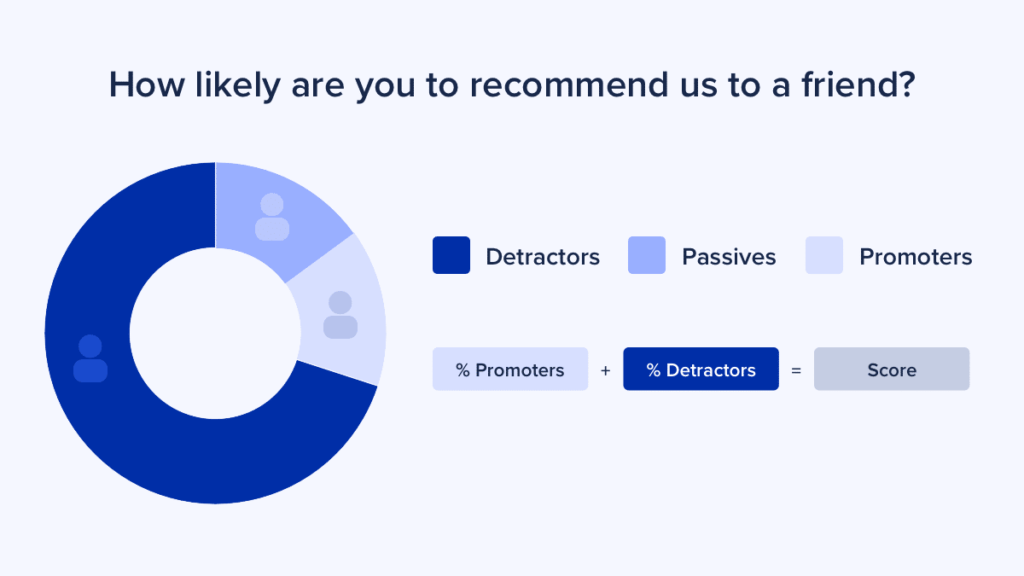
For instance, product and marketing teams used NPS widely to survey customers to rate their liking of a product, feature, or service.
CES
Lastly, CES is used to measure how much effort a customer has to put in to perform a certain task, such as navigating your website, getting an issue resolved, processing a refund, and so on..
To improve your CX strategy, you could trigger a survey like CSAT, NPS, or CES to your customers right after a customer service interaction with them.
There isn’t a hard and fast rule about what kinds of tools you should use to run these surveys. If you’re low on budget, you can always use Google Forms or something like Typeform.
And if you score low on any of these metrics, follow up with customers to get a more detailed understanding of what caused their frustration. Apply that feedback to improve your CX.
If you’re specifically looking to improve on your customer experience, you might want to zero in on metrics such as inbound calls, answered calls, refused calls, average handle time, and average hold time.
And RingCentral can help you there too. With its performance reports, you can do things like:
- Drill down to specific call details through easy-to-read, visually-mapped reports.
- Keep a close tab on more than 30 important key performance indicators (for example, customer service KPIs) that are pre-built in the RingCentral platform.
- Set up daily, weekly, or monthly report updates automatically sent to your inbox.
3. Customer churn
Churn goes by different names across industries.
While ecommerce retailers measure the average rate of abandoned carts, SaaS businesses might measure metrics like revenue churn (how much revenue is lost) and logo churn (how many customers quit their subscription).
Some businesses measure the opposite of churn (like the customer retention rate). But this is more of a case of looking at the glass half empty versus half full.
You can calculate the customer churn rate to find out the number or percentage of customers who stopped doing business with you.
Start by deciding whether you want to measure the churn for a timeline of a month or a year, or something in between.
You don’t need a fancy tool to measure customer churn. Instead, just look at your numbers and do some simple math:
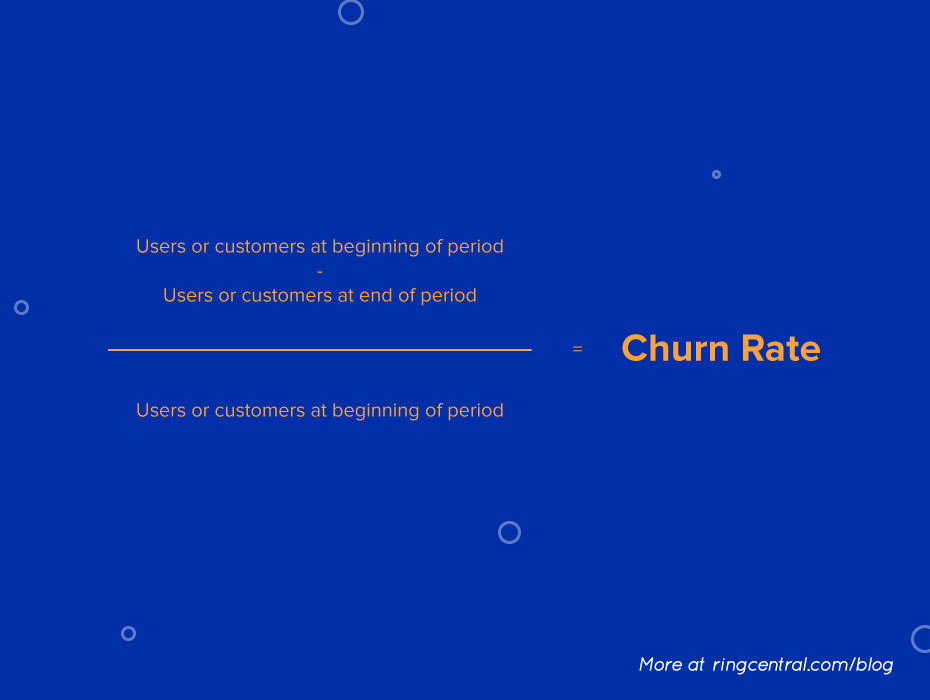
If you find your churn is happening at an alarming rate, you should dig deeper to understand the reason behind it.
For instance, you can prompt an exit survey either on the same page where customers cancel their orders or memberships, or through an email after they decide to close their account.
Let your customer experience analytics guide your business
Data is just numbers—it isn’t perfect. When you leave data idle on the table without direction, every team will interpret it in their own terms. And that creates more harm than good for your brand.
When your sales team sees customers as just accounts and metrics, it means they aren’t tapping into the sentiment of human emotions in their customers. (It’s also an indication that your CX is likely to suffer.)
But analyzing the right data and prioritizing the right metrics alone can’t help you master customer relationships either.
Blend the quantitative data in your customer experience analytics with qualitative findings and anecdotes to weave together a memorable customer experience. Ready to start crafting a world-class customer experience?
1 forrester.com/report/Come+Together+Right+Now+To+Deliver+The+Next+Best+Experience/-/E-RES143255
2 cmswire.com/customer-experience/5-voice-of-the-customer-program-examples-in-the-wild/
3 deloitte.wsj.com/cmo/2018/06/25/checking-in-on-the-next-gen-hotel-guest-experience/
4 analyticsindiamag.com/how-analytics-can-help-the-hospitality-industry/
5 igi-global.com/dictionary/data-knowledge-and-intelligence/39008
6 https://rejoiner.com/resources/amazon-recommendations-secret-selling-online/
7 nike.com/in/nike-by-you
8 medium.com/swlh/how-nike-uses-predictive-analytics-821907a90187
9 insidebigdata.com/2019/10/13/accessible-and-affordable-big-data-for-small-business
Originally published Apr 16, 2020, updated Jun 18, 2024
